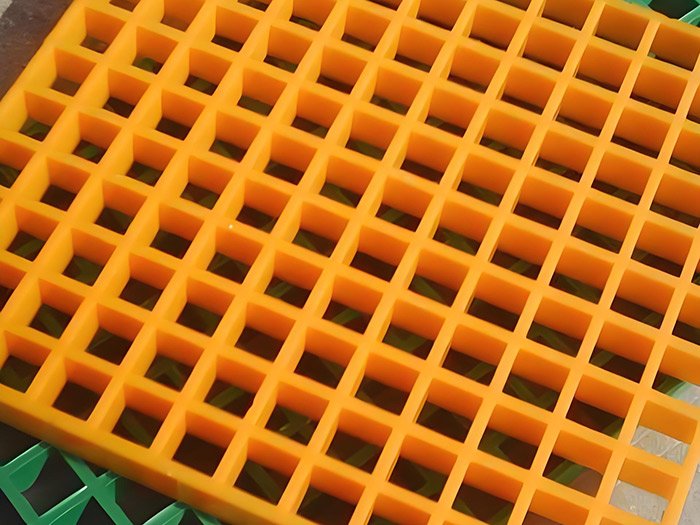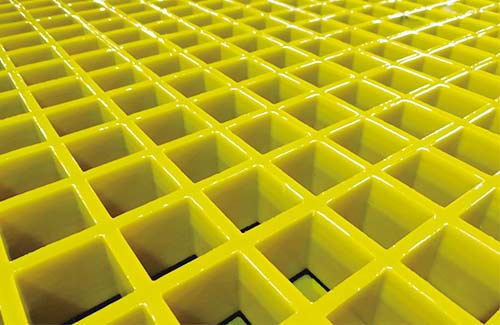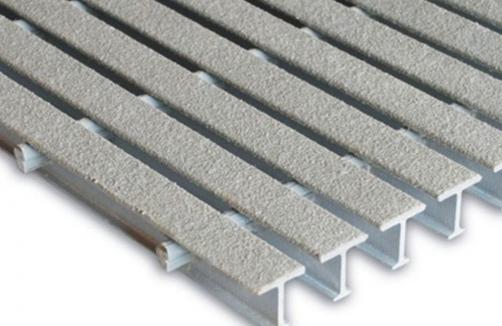FRP Grating for Wastewater Treatment Plants: Enhancing Durability and Efficiency in Industrial Facilities
Wastewater treatment plants (WWTPs) are critical infrastructure components that ensure environmental safety and public health. However, these facilities face numerous challenges, including corrosion, heavy loads, and chemical exposure. Traditional materials like steel and concrete often struggle to withstand these conditions over time. This is where Fiber Reinforced Polymer (FRP) grating emerges as a superior alternative, offering enhanced durability and efficiency. But what makes FRP grating the ideal choice for modern wastewater treatment plants? How does it compare to conventional materials? And what are the long-term benefits for industrial facilities? Let’s explore these questions in detail.
What Makes FRP Grating Suitable for Wastewater Treatment Plants?

Wastewater treatment plants are exposed to harsh conditions, including chemical corrosion, heavy foot traffic, and constant moisture. Traditional materials like steel rust and degrade over time, while concrete can crack and weaken. FRP grating, on the other hand, combines the strength of fiberglass with the durability of polymer composites, making it highly resistant to corrosion and chemical erosion.
One of the primary advantages of FRP grating is its lightweight nature. Unlike steel, which can be heavy and require extensive support structures, FRP grating is significantly lighter, reducing installation costs and structural stress. Additionally, FRP grating does not conduct electricity, making it safer for use in areas where electrical hazards are a concern.
How Does FRP Grating Enhance Efficiency in Industrial Facilities?
Efficiency is a key concern in wastewater treatment plants, where processes must be optimized to handle large volumes of water and waste. FRP grating contributes to efficiency in several ways. First, its smooth, non-skid surface reduces maintenance requirements, as it is less prone to slip hazards and does not accumulate debris. This means less time and money spent on cleaning and repairs.
Second, FRP grating’s high strength-to-weight ratio allows for the creation of stronger, more durable platforms without adding unnecessary weight. This can lead to longer service life and reduced replacement costs. Furthermore, FRP grating can be customized to meet specific load requirements, ensuring that it can handle the demands of various industrial applications.
Long-Term Benefits for Industrial Facilities
Investing in FRP grating offers numerous long-term benefits for industrial facilities. One of the most significant advantages is its extended lifespan. Unlike traditional materials that may need replacement every 20-30 years, FRP grating can last 50 years or more with minimal maintenance. This translates to lower lifecycle costs and greater reliability.
Another benefit is the environmental impact. FRP grating is recyclable and does not contain toxic materials, making it an eco-friendly choice. By reducing the need for frequent replacements, it also helps minimize waste and resource consumption.
Austausch von Erkenntnissen mit der Industrie
The adoption of FRP grating in wastewater treatment plants is gaining traction due to its proven performance and cost-effectiveness. Industry professionals are increasingly recognizing the advantages of this innovative material. For example, a recent study by [Authoritative Source] found that facilities using FRP grating experienced a 30% reduction in maintenance costs and a 20% increase in operational efficiency.
Companies like [Company Name] have successfully implemented FRP grating in their facilities, achieving remarkable results. “Switching to FRP grating was a game-changer for our wastewater treatment plant,” said [Expert Name], CEO of [Company Name]. “Not only did it enhance durability, but it also reduced our long-term costs and improved safety for our workers.”
Schlussfolgerung
FRP grating is revolutionizing the wastewater treatment industry by offering a durable, efficient, and environmentally friendly solution. Its resistance to corrosion, lightweight design, and customization options make it an ideal choice for industrial facilities facing harsh conditions. By investing in FRP grating, facilities can enjoy long-term benefits, including reduced maintenance costs, improved safety, and enhanced operational efficiency.
As the demand for sustainable and cost-effective infrastructure solutions grows, FRP grating is poised to play a pivotal role in the future of wastewater treatment. By embracing this innovative material, industrial facilities can ensure they are well-equipped to handle the challenges of tomorrow while contributing to a safer and cleaner environment.







